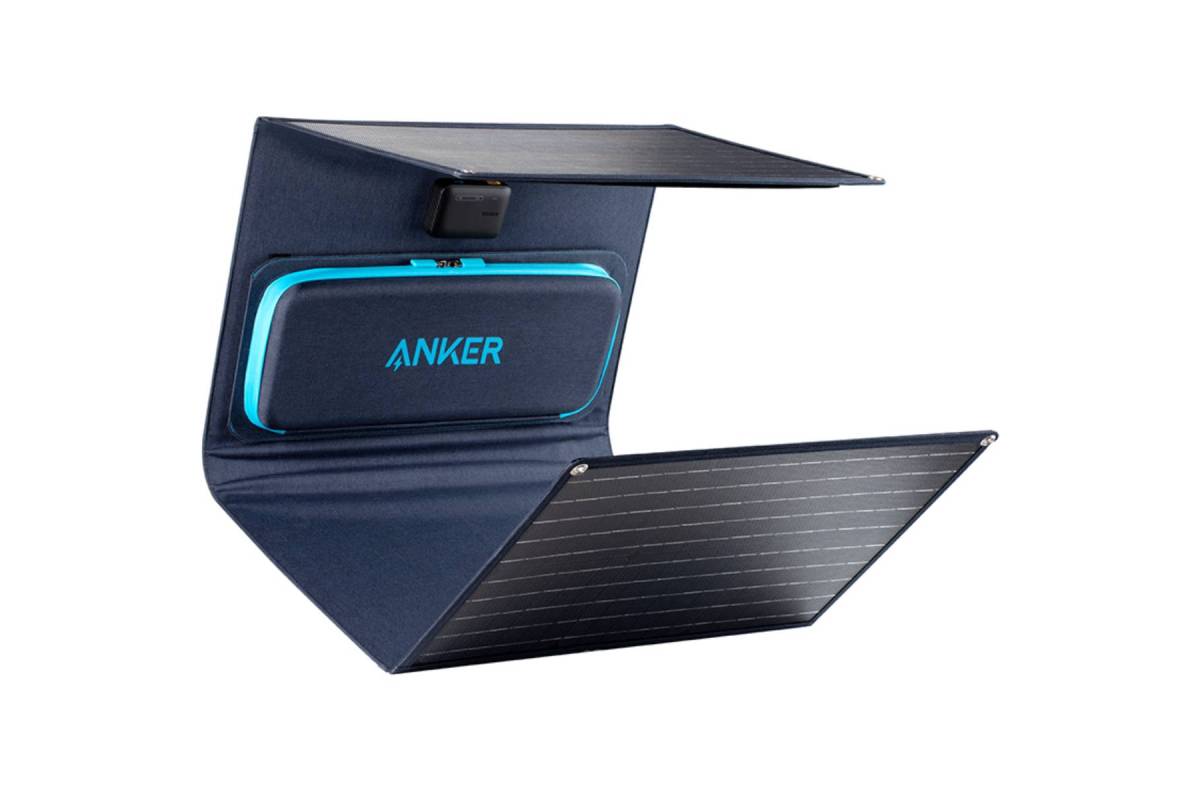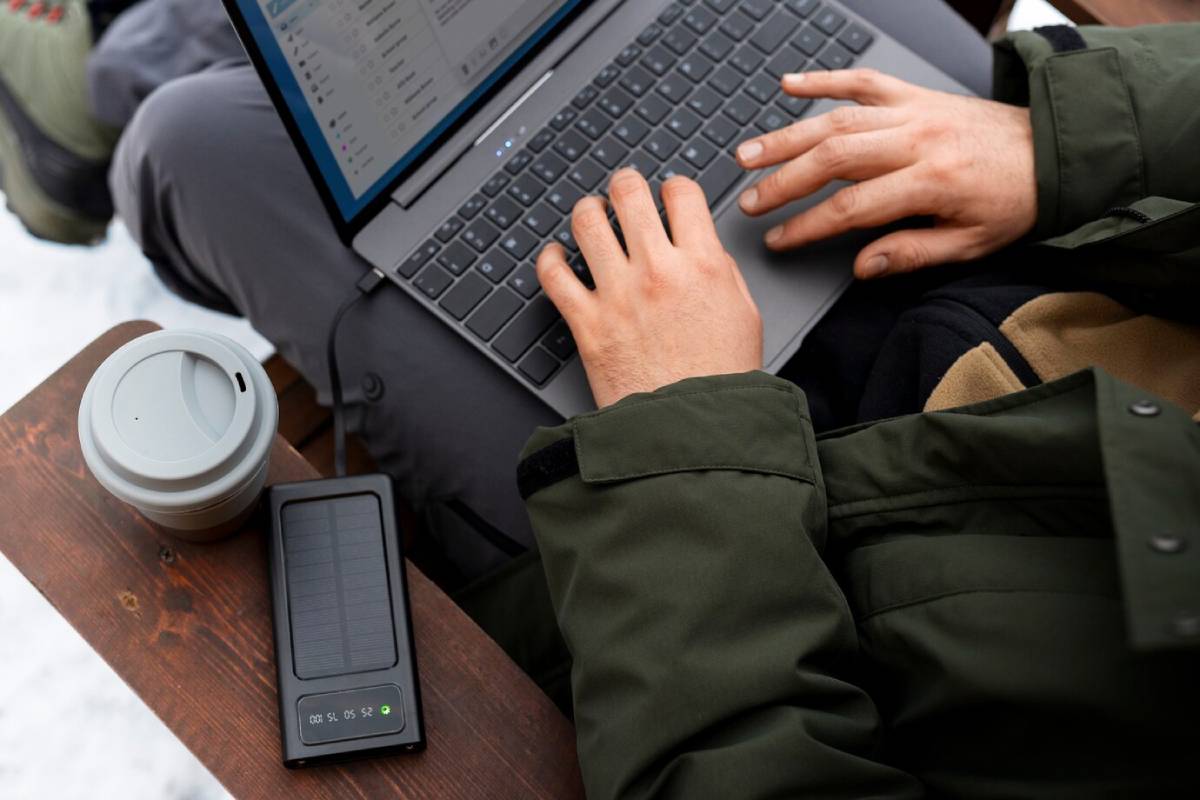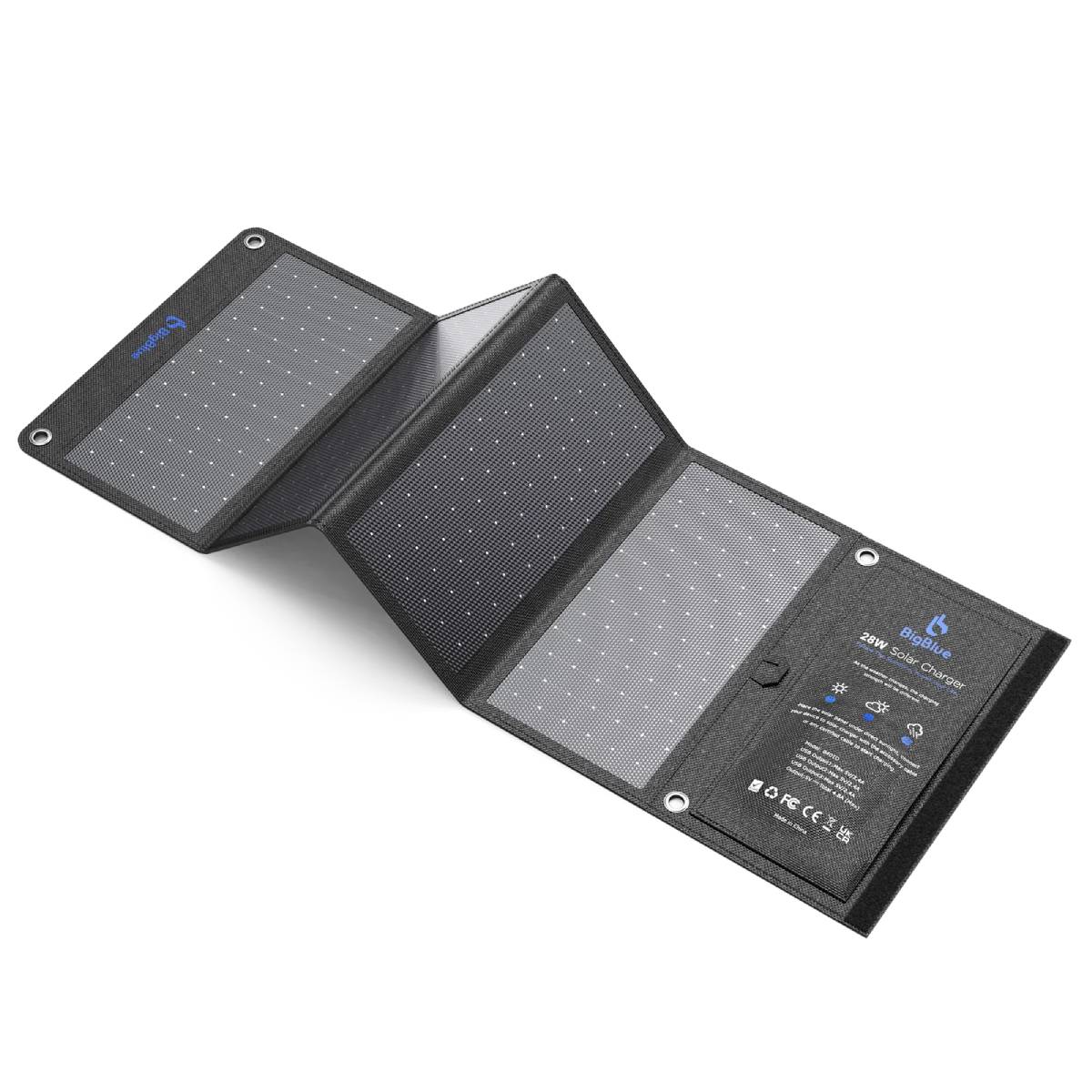
Solar-Powered Chargers: Green Energy on the Go
Imagine you are halfway up a mountain trail. You reach for your phone to take a breathtaking photo, only to find it is dead. Now imagine pulling out a compact charger that captures the sun’s energy, giving your device the power it needs — no plugs, no stress.
In today’s eco-conscious world, solar-powered chargers are more important than ever. They let you stay connected while travelling sustainably, making them a must-have for every modern explorer.
This guide shows how sustainable travel tech is transforming the industry. You’ll learn what defines the best eco gadgets and which solar-powered chargers to consider for 2025.
Ready to harness green energy wherever you roam? Let us begin.
Why Choose a Solar-Powered Charger for Travel?
Freedom from Wall Plugs

With a solar charger, you are not tied to a power outlet.
You can charge your devices on:
- Hiking trails
- Beach trips
- Camping holidays
- Remote road trips
All you need is daylight — no more searching for a plug or stressing over low battery warnings.
Eco-Friendly Energy
By using the sun’s energy, you reduce reliance on fossil fuels. It is a small change with a big impact, especially if you travel often.
Using eco-friendly travel tech, such as a solar charger, helps make your trips greener.
Emergency Backup
Solar chargers are not just convenient. They can be lifesavers during emergencies, natural disasters, or when travelling off-grid.
Keeping one in your backpack means you will always have a backup power source, wherever you are.
How Solar-Powered Chargers Work
Capturing Sunlight
Solar chargers use photovoltaic cells to capture sunlight and convert it into electricity.
This electricity is either:
- Stored in a built-in battery
- Sent directly to charge your device
The amount of energy captured depends on the strength of sunlight, panel size, and panel efficiency.
Types of Solar Chargers
There are two main types:
- Direct solar chargers: Charge your device as soon as sunlight hits the panel.
- Solar battery chargers: Store energy in an internal battery for later use.
Both types have their place, depending on your travel style.
Best Solar-Powered Chargers for 2025
1. Anker 625 Solar Panel
Best for: Versatility and quality.
Why it stands out: Anker combines durability, efficiency, and excellent design.
Top Features:
- High conversion efficiency
- Two USB ports
- Foldable and portable
- Built-in kickstand for optimal angle adjustment
Why you will love it: Perfect for serious travellers who want reliable, green power anywhere.
2. BigBlue 28W Solar Charger

Best for: Lightweight adventurers.
Why it stands out: BigBlue’s charger delivers a lot of power without adding much weight.
Top Features:
- Triple USB output
- Smart charge technology
- Water-resistant fabric
- Compact and easy to pack
Why you will love it: Ideal for backpackers and hikers who value space and weight savings.
3. Goal Zero Nomad 10
Best for: Outdoor explorers.
Why it stands out: A rugged design built to handle real-world travel conditions.
Top Features:
- Lightweight and weather-resistant
- USB output for direct device charging
- Designed to pair with Goal Zero power banks
Why you will love it: Simple, tough, and reliable — great for adventures off the beaten track.
4. BioLite SolarPanel 5+
Best for: Smart energy tracking.
Why it stands out: BioLite’s clever design makes capturing the sun’s energy simple and efficient.
Top Features:
- Integrated sundial for precise alignment
- Built-in 3,200mAh battery
- USB output for phones and gadgets
- Adjustable kickstand
Why you will love it: No more guessing where to aim — you maximise energy capture every time.
Internal Link: Learn about eco-friendly travel gadgets you should not miss.
5. Nekteck 21W Portable Solar Panel
Best for: Budget-conscious travellers.
Why it stands out: Affordable yet highly effective for charging basic devices.
Top Features:
- Dual USB ports
- High-efficiency solar cells
- Compact, foldable design
- Rugged exterior for outdoor use
Why you will love it: Great entry point for trying solar energy without breaking the bank.
Key Factors to Consider When Choosing a Solar Charger
1. Efficiency
Look for panels with high conversion rates. Good chargers should convert at least 20 per cent of sunlight into usable electricity.
2. Portability
Travel-friendly chargers should be:
- Lightweight
- Foldable
- Easy to pack or strap to a backpack
Size and weight matter when you are always on the move.
3. Power Output
Consider what you plan to charge. Phones need less power than tablets or cameras. Check if the charger delivers enough wattage for your devices.
4. Battery Storage
If you want to charge after sunset, pick a charger with a built-in battery. Otherwise, pair it with a portable power bank for flexibility.
5. Durability
Travel is tough on gear.
Choose chargers made from:
- Water-resistant materials
- Reinforced seams
- Impact-resistant designs
Especially important for outdoor adventures.
Real Traveller Stories: Why Solar Power Matters
Sophie’s Remote Trek in Patagonia
Sophie carried the Anker 625 Solar Panel on her trekking expedition. With days between lodges, she relied on it to keep her GPS and phone powered. The panel never let her down, even through unpredictable weather.
Michael’s Campervan Adventure Across Europe
On his three-month road trip, Michael charged his phone, camera, and speaker with the BioLite SolarPanel 5+. He loved the sundial feature. It made aiming easy. He also appreciated having off-grid power for beachside sunsets.
Anna’s Backpacking Journey through Southeast Asia
Anna chose the Nekteck 21W solar panel for her lightweight setup. It clipped onto her backpack during hikes, keeping her devices charged all day long without adding noticeable weight.
Practical Ways of Using Solar Chargers
- Place your charger in direct sunlight whenever possible.
- Angle the panels properly using a built-in stand or simple props.
- Clean panels regularly to remove dust and dirt for better efficiency.
- Store your charger safely when not in use to prevent damage.
- Pair with a reliable power bank for cloudy days or nighttime use.
Conclusion: Power Up the Green Way
In 2025, you will no longer need to be attached to a wall plug for power. Solar-powered chargers will allow you to charge your devices wherever you are. They also offer security, ensuring you stay connected while reducing your environmental impact.
No matter if you are hiking in the mountains, taking a road trip, camping, or wanting to travel sustainably, choosing eco-friendly travel tech is a smart move. A solar-powered charger is an excellent example of this kind of technology. It allows you to enjoy your journeys without worrying about finding an outlet.


